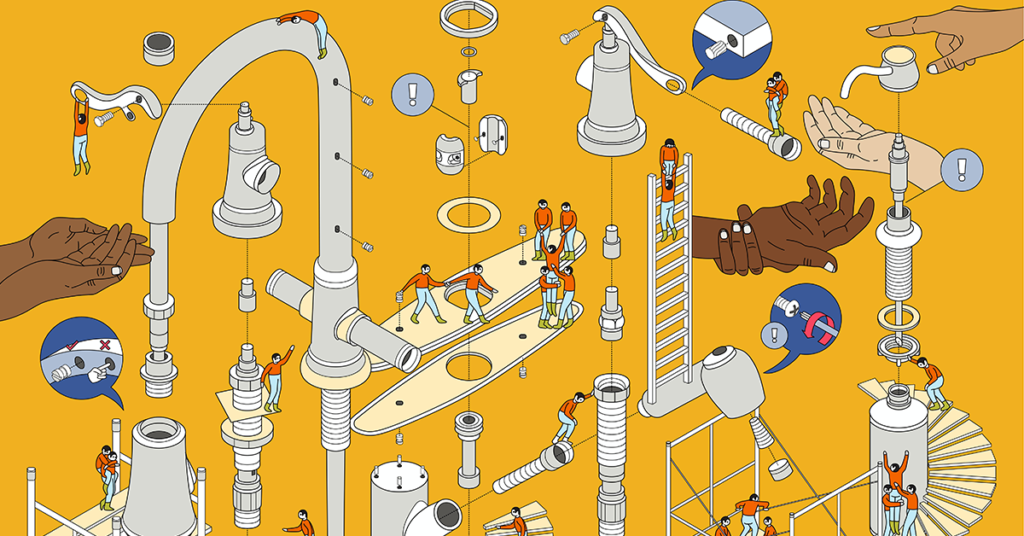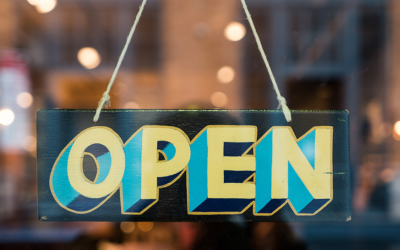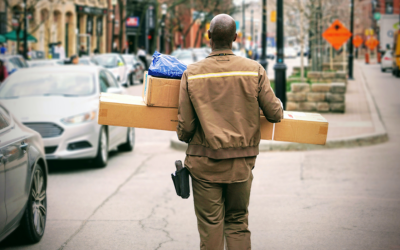RECAP: From Response to Recovery: How Our Communities Will Adapt After COVID-19
The COVID-19 pandemic has disrupted our communities, reshaping how we move, learn, spend, and connect with one another. Precautionary measures taken to mitigate the impacts of the virus are likely to have long-lasting residual effects on societal patterns and trends well after communities are back up and running. While our communities have most importantly had to face concerns around biomedical security, the virus has also exposed the vulnerability of our frontline businesses, the dependencies of our urban networks and supply chains, and the accessibility divide of our digital infrastructure.
In an effort to envision what a “new normal” will look like and how we’ll get there, UrbanLogiq virtually sat down with experts Alyssa Rodriguez, Andy Yan, and Darryl Julott. Together these community leaders span the fields of transportation, urban planning, and economic development, offering diverse perspectives on how our communities are likely to change and adapt as a result of the pandemic, and what to watch out for as we transition from response to recovery. For those who missed it, we recapped key discussion points below.
You can also watch the whole webinar recording and learn more about our panelists here.
* Note: The panelists’ responses in this summary were paraphrased for the purposes of this blog. For the entire context, please watch the webinar in the link above.

UrbanLogiq: As we move from response to recovery, what are people looking for from their governments right now?
Alyssa Rodriguez: Stability, and the ability to do business as usual; a sense of leadership, [which] speaks to the government sharing consistent, reliable information; resources, and to ensure resources get to the people that need them; the ability to still have a voice.
Who and what unique needs are being missed?
Darryl Julott: [The distinction] between mitigation and recovery, instead of looking at them as two completely separate entities. If we don’t mitigate properly, there’s nothing to recover. We have business owners who have been around for 20-40 years and have run very successful businesses and haven’t really had to adapt to digital. Unfortunately those are the ones who are seeing the effects right now, because they haven’t been in the position where they’ve had to adjust so quickly. There’s a saying, “as main street goes, the neighborhood goes.”
Alyssa Rodriguez: Identifying vulnerable populations. So much of what we’re doing right now is digital and there is a huge percentage of our population that doesn’t have that same access to digital services. There’s room to think about how to reach them digitally, or how to reach them in other ways.
What are some key things we still have unanswered questions about?
Andy Yan: Data is going to be key. Not only new means of mining big data, but how that connects to long existing datasets that are difficult to obtain, but can allow one to begin understanding the diagnostic of the problem, the monitoring of the solution, and then the adjustments that are going to be needed in terms of what policies are working.
What does tomorrow look like and what issues will define it?
Andy Yan: First, biomedical security. The entire issue is almost completely defined by how we’re going to ensure a level of biomedical security for people returning to work and school. We’ll see what this actually means in terms of technology and medicine.
One issue that will control it all is the culture changes. The core cultural changes that the last 5-6 weeks of physical distancing have done to us as a society and how we are going to adjust, ranging from housing to the question of transportation.
How can we look at adapting the new mobility paradigm in a world where we have this biomedical security issue?
Alyssa Rodriguez: Although people can’t get out and about a lot, they’re noticing how nice it is to be in a transportation system that isn’t that congested. I think we’re seeing a lot of latent demand for other types of transportation and transportation related recreation; demand for opportunity for a different kind of space.
Some of these new models – whether that’s shared mobility or micro-mobility – will be impacted by the whole economics of it, and whether the companies are financially resilient enough to make it through. They’ll need the financial backing, and they will need a certain comfort level from the public.
What sectors of the economy will require enduring support shifting from relief to recovery? Is the shift to localization going to be enduring?
Darryl Julott: Anywhere you’ve got a lot of specialized products. Stores that rely on foot traffic. [But] we’re starting to see a massive shift of people back into the idea of shopping local, so that’s one benefit coming out of this. We’re seeing just as big if not bigger of an impact on large businesses as well.
Andy Yan: The fact that COVID is affecting everyone creates the opportunity for a greater project. It’s an experience which can pull people together and have that opportunity for collective action, that we are only given very rarely. It comes down to how this opportunity is directed.
As societies become increasingly specialized, they also have this remarkable element of fragility. [We could see a] reinvigoration of a form of manufacturing that has left places like North America, be brought back on shore. We are reminded about the opportunities of looking to the local while yet connected to the digital.
If the pandemic proves to be enduring, and we don’t have a vaccine in the near future – Do you have any thoughts on how society starts adjusting? How will our governments change and what do we need to think about?
Alyssa Rodriguez: The continuity of education, offering childcare that parents are comfortable sending their kids to, and addressing the fact that if education becomes digital, so many kids out there don’t have access to digital resources. Considering the relationship between transportation and education.
Andy Yan: Land use reform, and rethinking our cities along terms of land use connected to transportation, connected to housing, connected to economic development. A risk mitigation system that’s based upon a more localized network of neighborhoods to reduce long trips to the store or workplace. A revitalization of localization because of the fact that we build neighborhoods under the idea of a 15-minute bike ride.
Acknowledging the caring economy as a new element of the economy. Ensuring we have resilience built in over vulnerability and fragility.
Any closing thoughts?
Darryl Julott: We need to be forward thinking, and we need to be collaborative. One of our biggest strengths at Digital Main Street has always been our relationship with government [and] buying into the idea of [collaborative] public-private partnerships.
Alyssa Rodriguez: A lot of action will need to be at the local level: procuring resources, setting policy, making sure our transportation systems are working at a local level, visiting our local businesses and making sure that they have the support and customer base they need. As government officials and experts in our field, if we can build on trust, and explain the ‘why,’ we have the chance to steer our communities in the way we need to go. I think we can go forward in a positive direction.
–
We extend a huge thank you to Andy, Alyssa, and Darryl, and look forward to more virtual discussions to come in our Building Resilient Communities series.
At UrbanLogiq we’re leveraging data analytics to support government agencies seeking to monitor and understand changes in their communities. If you have questions or want to learn more, please contact us!



